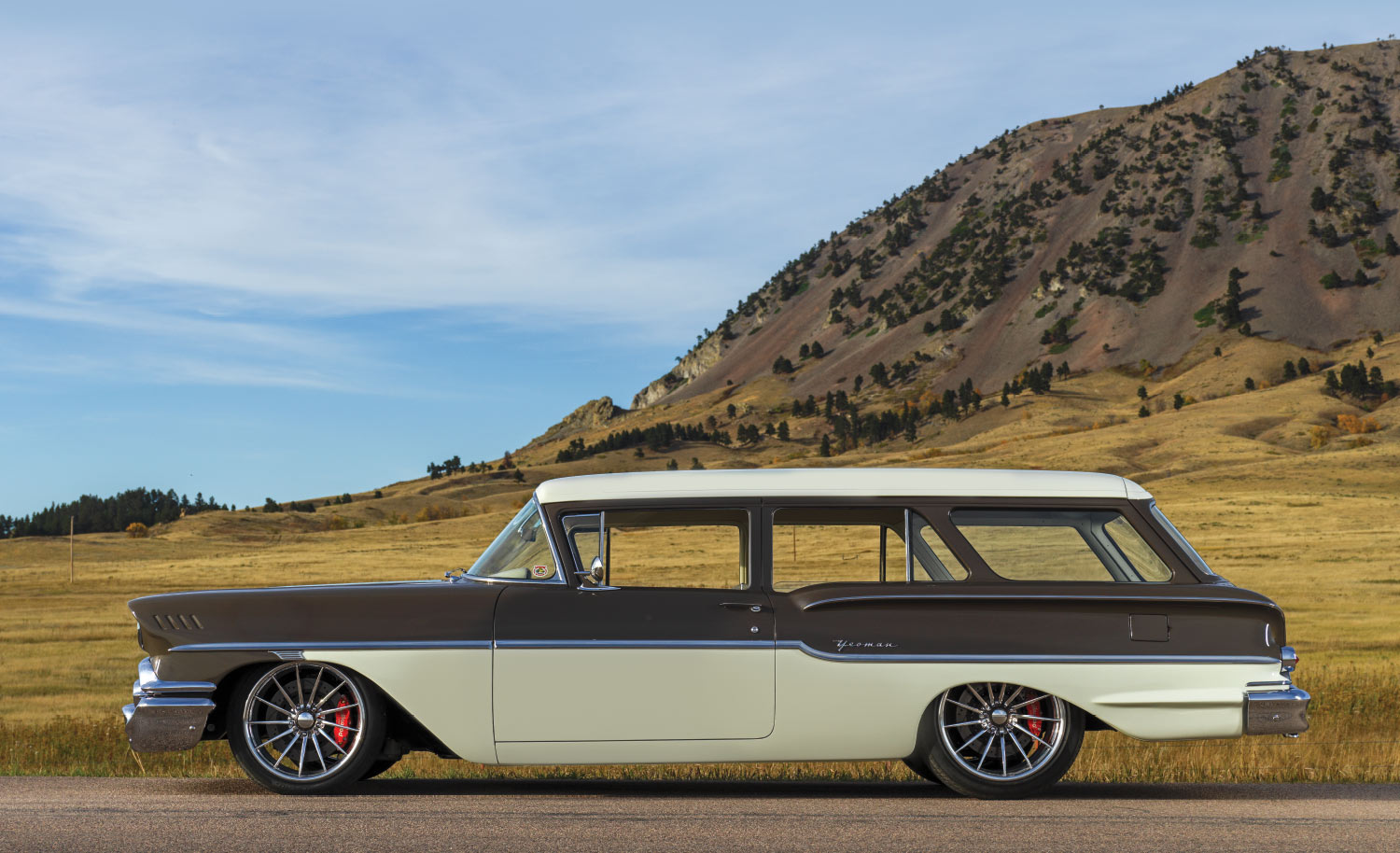
 Photography by Don Kates
Photography by Don Katesardly anything about 1958 was like any other year that preceded it, at least for Chevrolet’s passenger-car division. That year, the company changed just about everything about its cars, all the way down to what it called them. Let’s look at Derek and Eileen Eisenbeisz’s ’58 Chevy Yeoman two-door wagon and its transition into a top-of-the-line hot rod.
What happened to the wagons is practically unspeakable, at least among contemporary wagonistas. After watching two-door wagon sales languish during the three years that preceded, Chevrolet all but killed the configuration for 1958. You could still get a Nomad that year, but it was just a trim package on a regular ol’ four-door wagon. Chevrolet did build a two-door wagon but banished it to the bottom rung and called it Yeoman, a historic title for family farmers.
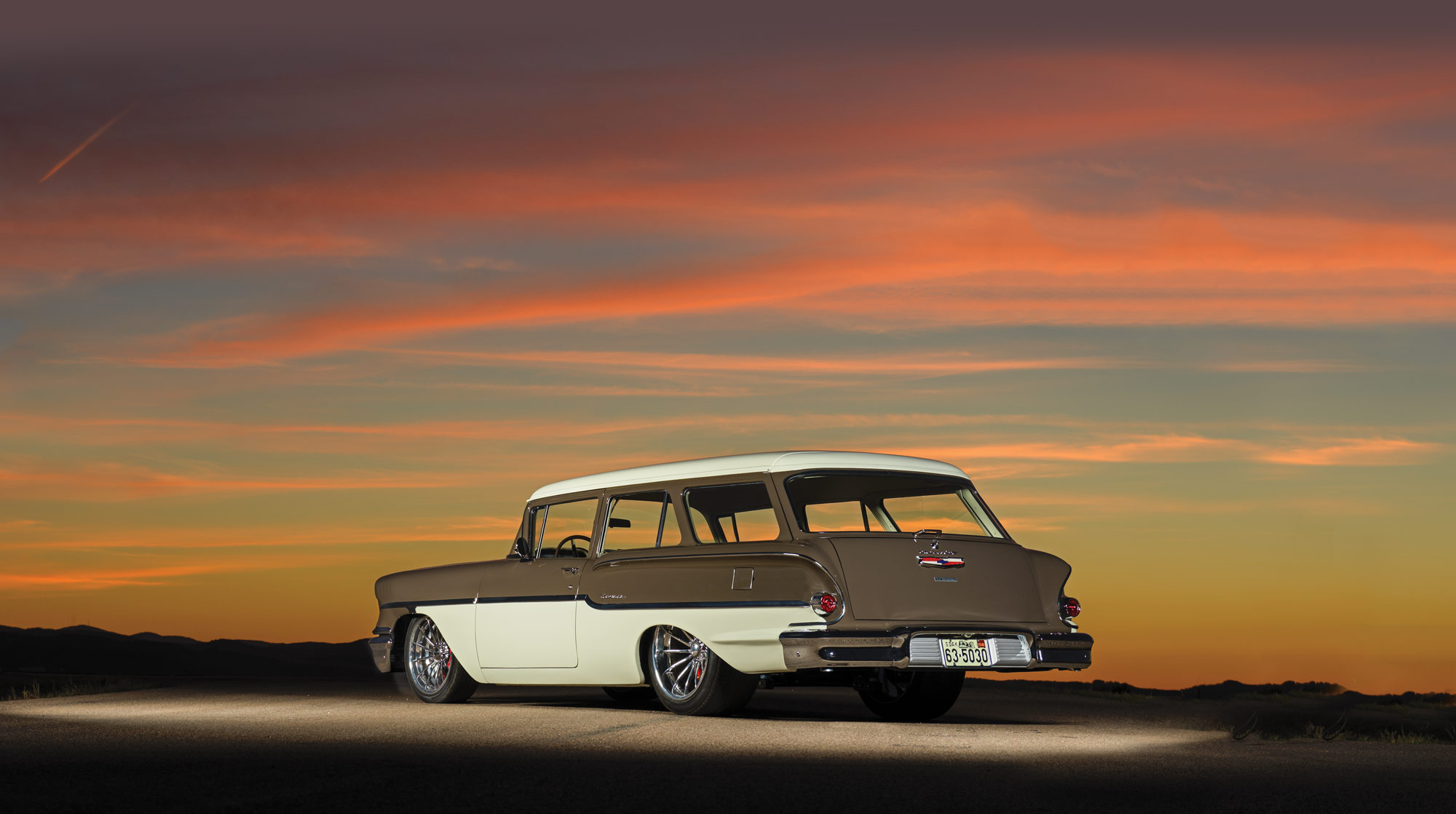
Good friend Derry Jenson spotted the first one sitting in a pasture out in West River. “I had no idea what a Yeoman was until I saw that one,” Derek admits. “About that time wagons were coming on big, so we bought it.”
As they’d done with several other cars, they sent the field-find Yeoman to Paul Atkins Hot Rods and Interiors. But as the Atkins crew tore into the car, one thing became clear: Derek and Eileen would be money ahead to start with a nicer example. Despite the rarity, “This one just turned up,” Derek says.
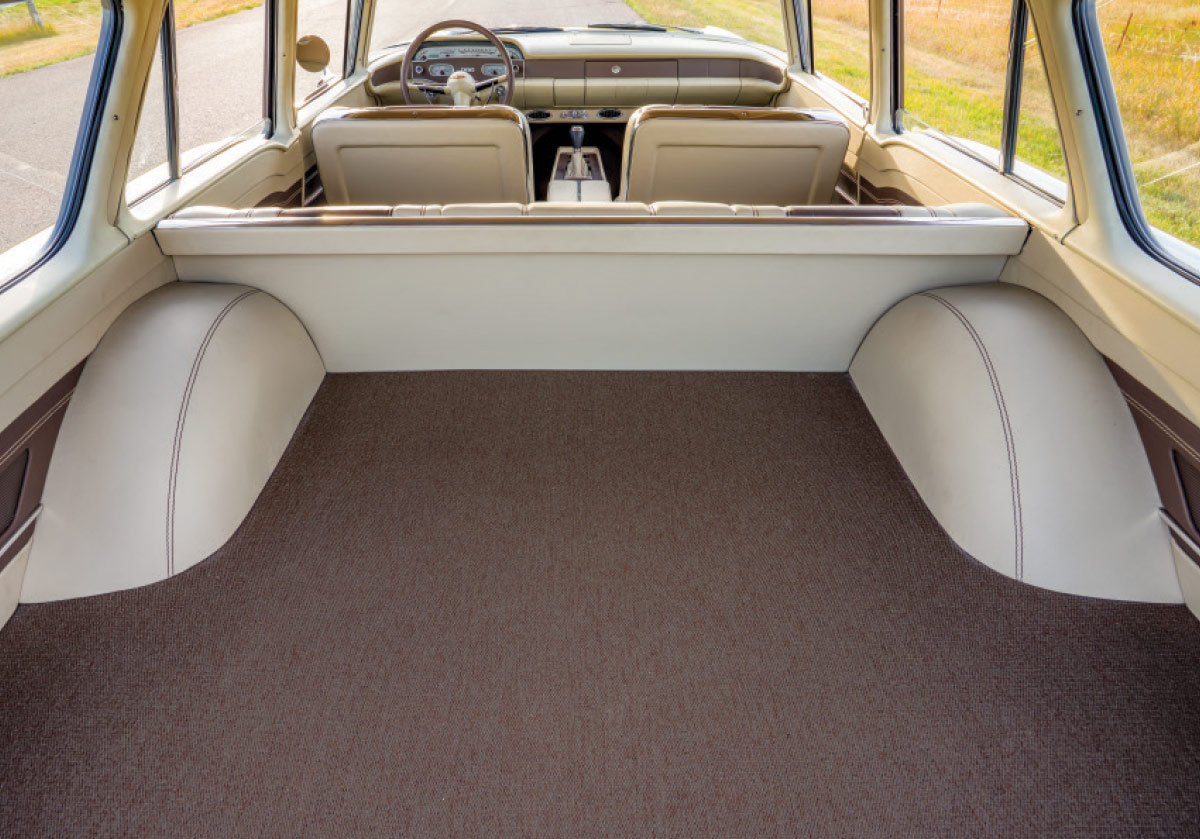
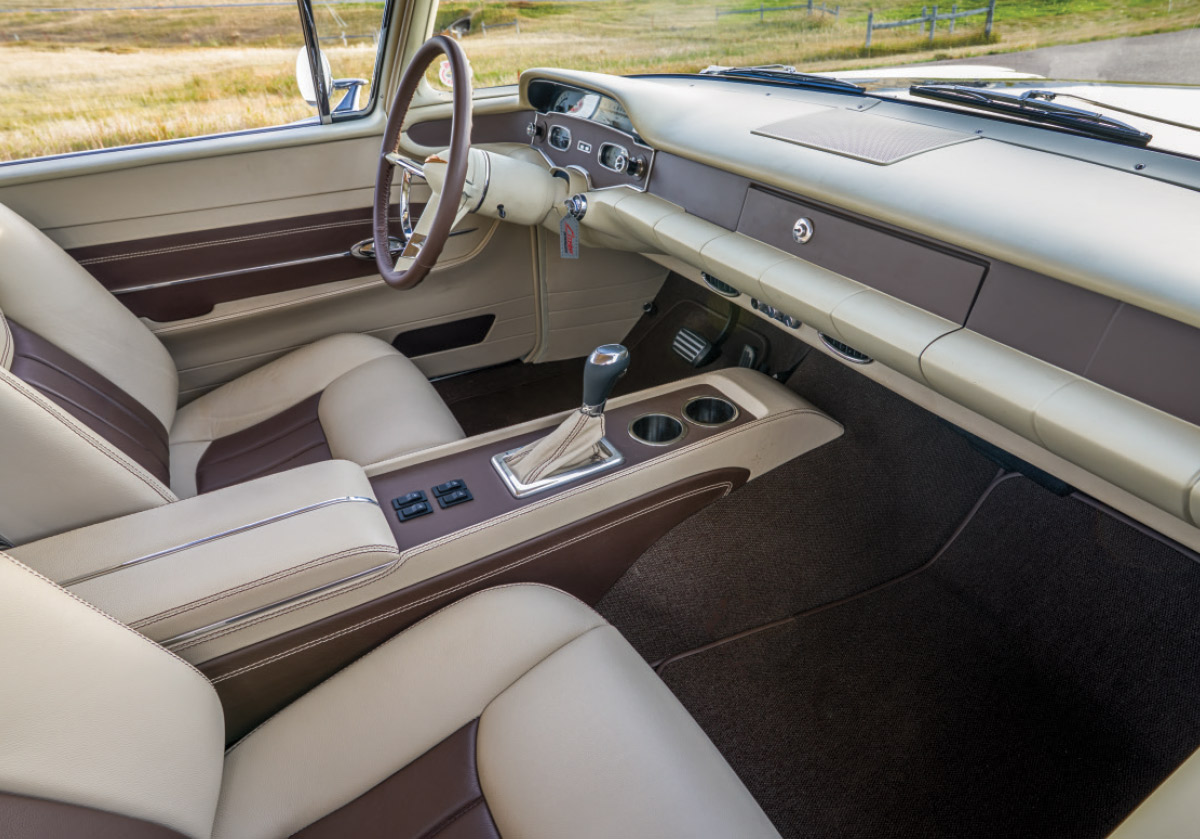
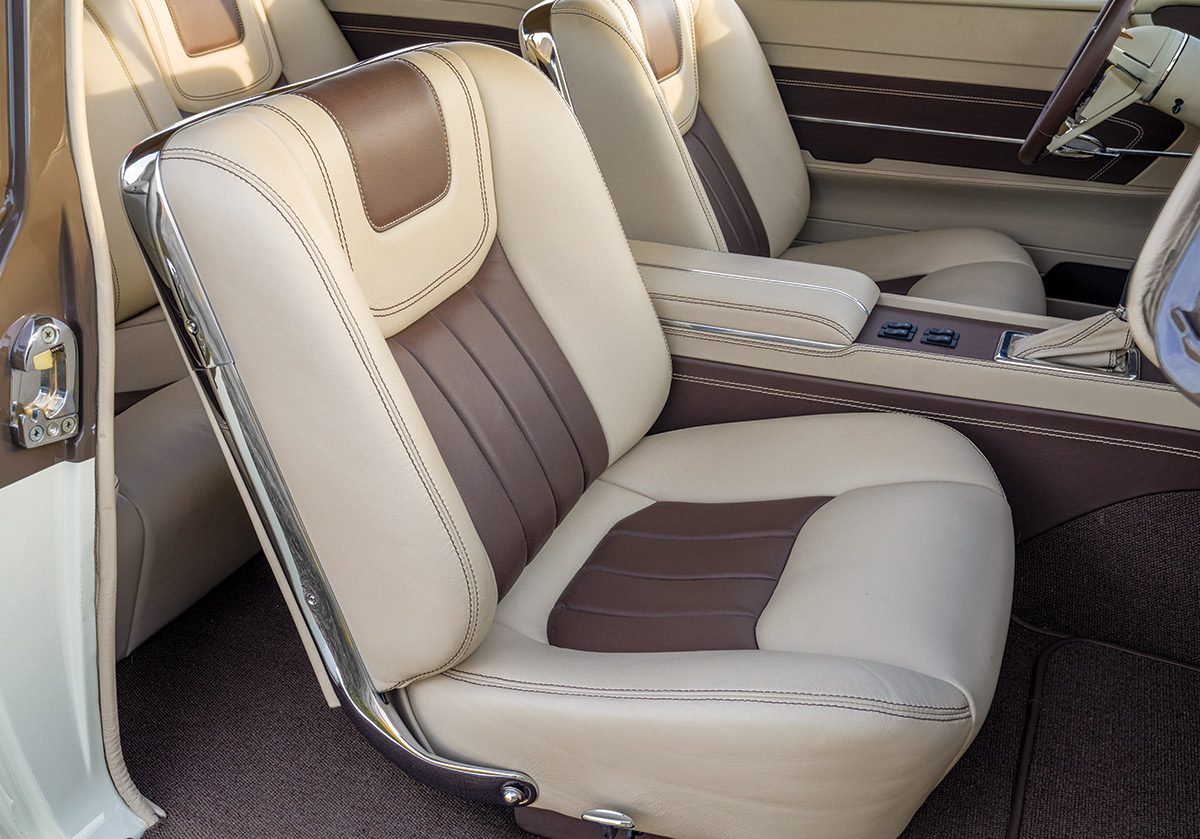
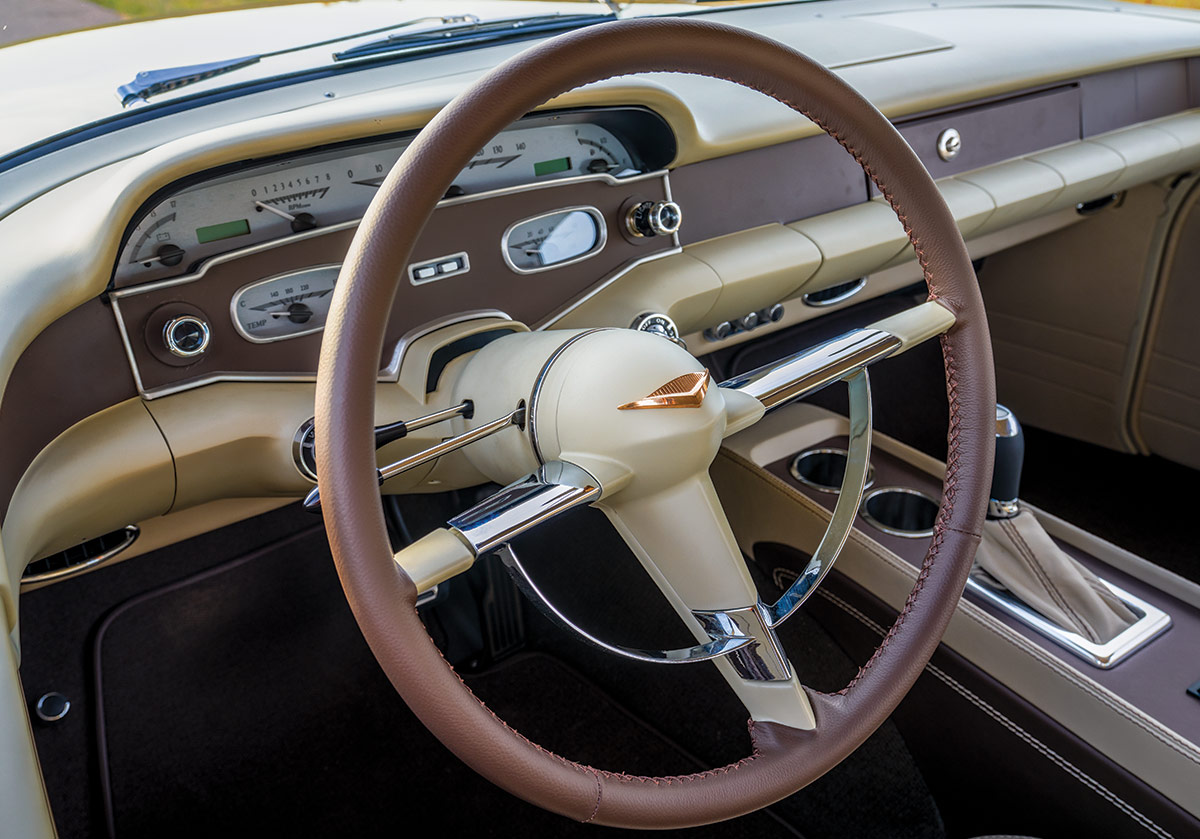




By this point, his crew had already mounted the field-find body to a Roadster Shop Ride Line chassis—no small task considering the differences between GM’s cruciform frame and the Roadster Shop’s more conventional perimeter design.
Like the cruciform frame that it replaces, the Ride Line chassis is a clean-sheet design based on a more conventional ladder-type frame, but with a substantial X-style crossmember. Rather than bend the rails from square tube, Roadster Shop fabricates the frame walls from 10-gauge sheet. Though more labor intensive, the method lets the shop exploit the unconventional floor shape with minimal intrusion.
The front suspension is another clean-sheet design that uses Corvette C7 uprights and hubs and C6 endlinks on a mandrel-bent tubular antiroll bar. To minimize noise, vibration, and harshness, the Ride Line systems employ oversized, OEM-style control arm bushings. The Fast Link parallel four-bar rear suspension uses booted and sealed bushing assemblies to minimize exposure. It mounts a Strange Engineering 9-inch housing with 31-spline axles. John’s Industries built the gear carrier with a 3.25:1 gear mounted on a 31-spline limited-slip carrier. Both ends ride on Fox SV 6.0 coilovers.
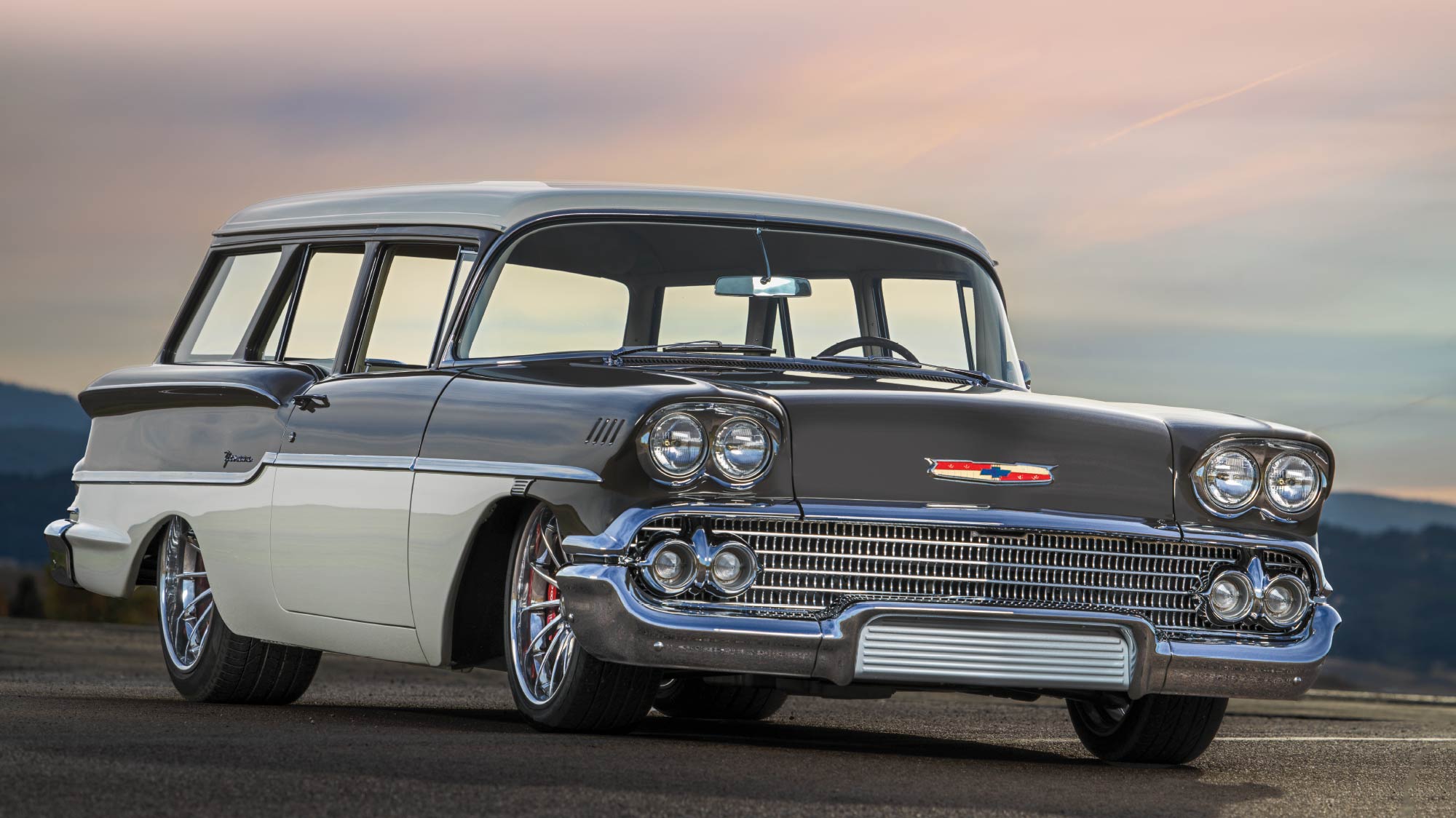
Big power justifies big stoppers. Both ends use Wilwood 14-inch drilled-and-slotted rotors with narrow six-piston Superlite calipers up front and four-piston calipers out back. Curtis Speed made the Riveter wheels. They measure 19×8 and 20×11 and wear 235/40ZR19 and 315/35ZR20 Pirelli P Zero hides.
Appearance-wise, the body remains entirely stock. “We kept it that way because we wanted that Yeoman name,” Derek points out. First, it’s a name as rare as the model—Chevrolet used it for 1958 only. But more than that, it befits the owners of this one, Derek and Eileen, who just happen to be … farmers.
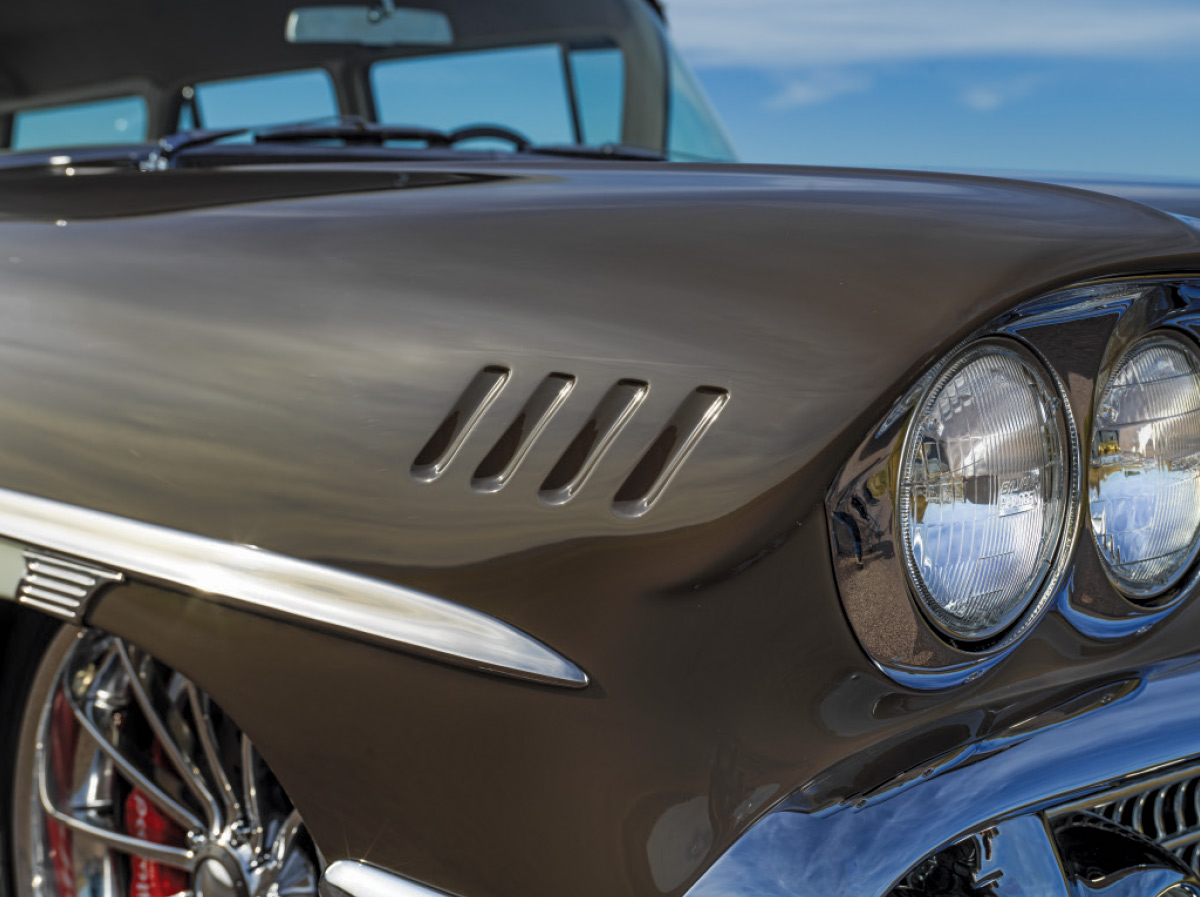
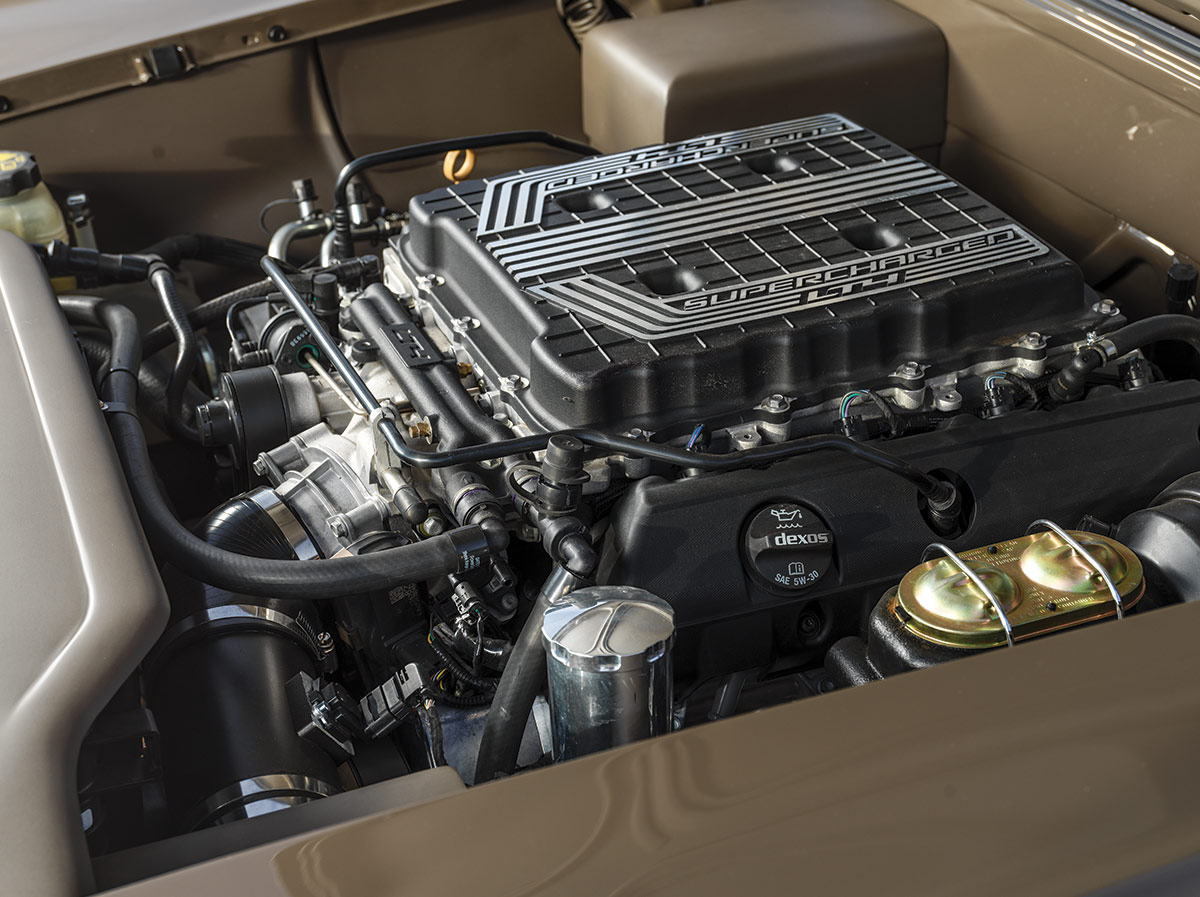
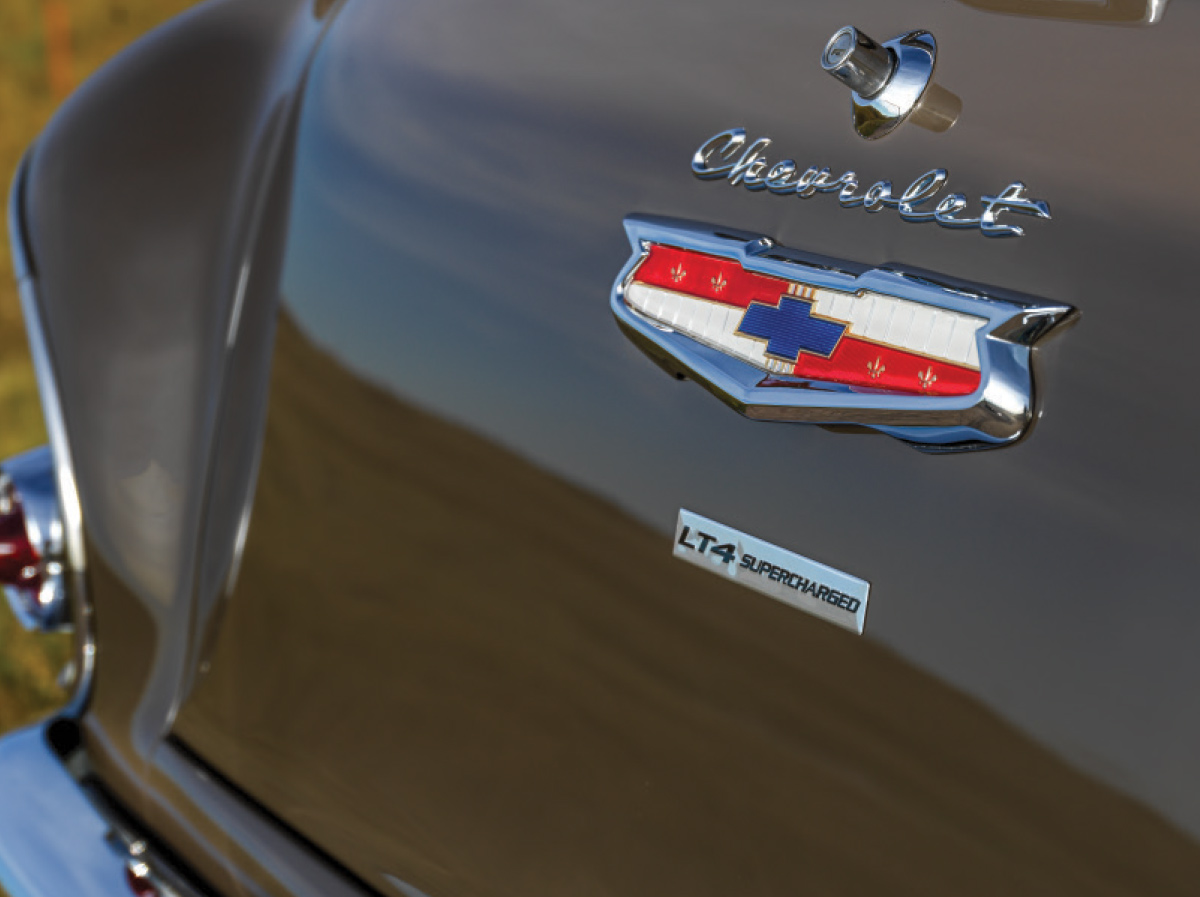
The color, of course, is anything but stock. “Derek fell in love with a similar color on a Corvette that was in [Atkins’] shop,” Eileen says, who refers to this combination as Milk Chocolate and Cream. “I originally wanted something blue, but I tell you what, I’ll never question [Atkins’] choice of color and materials again. It’s gorgeous!”
The interior began as a pair of ’64 Impala buckets and a narrowed rear bench that the Atkins team gutted and built up with foam. They clad the seats and trim panels in a combination of Sepia- and Khaki-colored Hampton leather, the floor in Douglass carpet, and the headliner in wool broadcloth. A downsized ’55 Chevy steering wheel mounts on an ididit column. The dash hosts a Dakota Digital VHX instrument cluster and a Vintage Air climate-control system.
Nobody—least of which Chevrolet—could’ve anticipated what someone would do to the company’s least-popular utility vehicle. And probably not even Derek and Eileen could’ve anticipated just how popular their expression would turn out; in 2021, the car took a Top 10 Builder’s Choice at Goodguys’ BASF Nashville and won Best of Show, Committee Choice Car of the Year, and Best Interior at Kool Deadwood Nites in Deadwood, South Dakota. Earlier this year at the Counts Car Show in Rapid City, South Dakota, it won best interior, paint, Top 8 of the Big 4—basically everything except Best Ford, “which is kind of tough to do with a Chevrolet!” Eileen jokes. It took Top 10 and Sweepstakes at the Toppers Car Show in West Fargo, North Dakota.
You might say that Derek and Eileen didn’t even anticipate just how nice their Yeoman would turn out. “I thought it would be a great ride for the grandkids—we could throw ’em in the back seat and take ’em places,” she says. “But it turned out pretty nice, so we might have to wait for a little of that newness to wear off before we go piling into it.”
